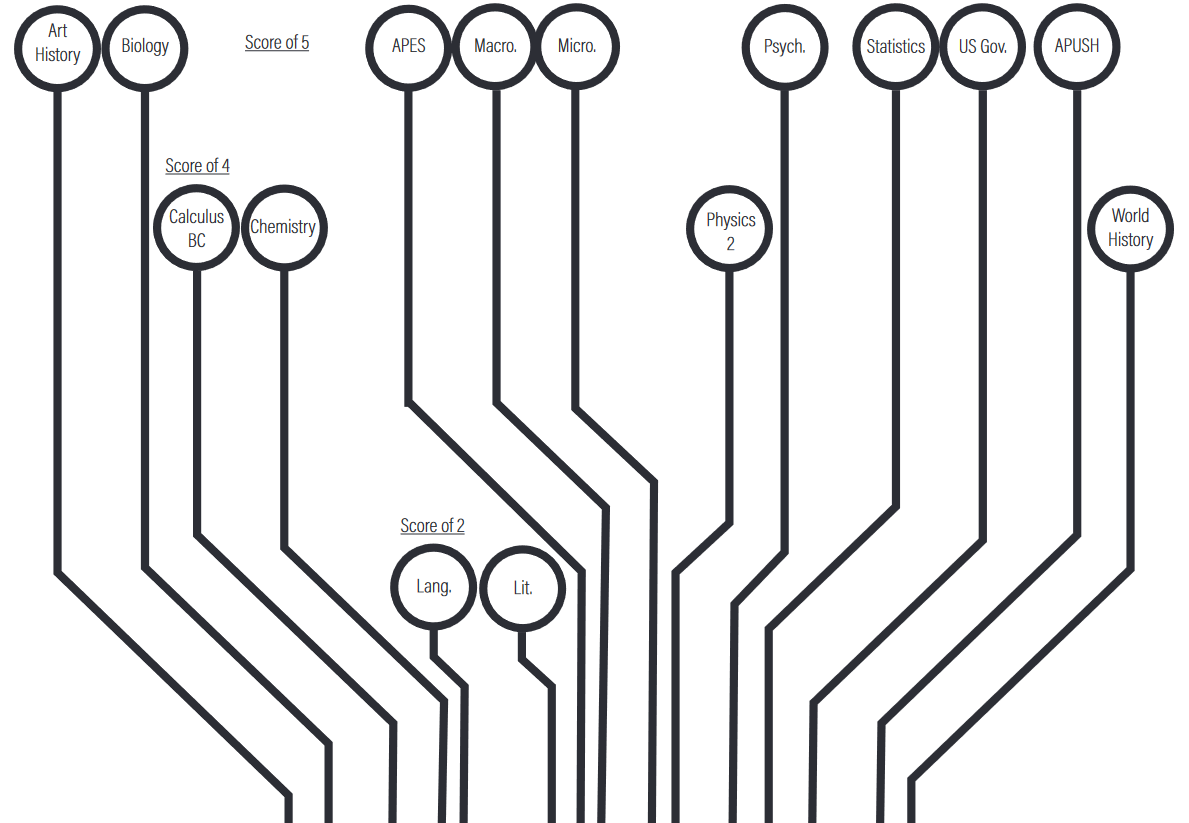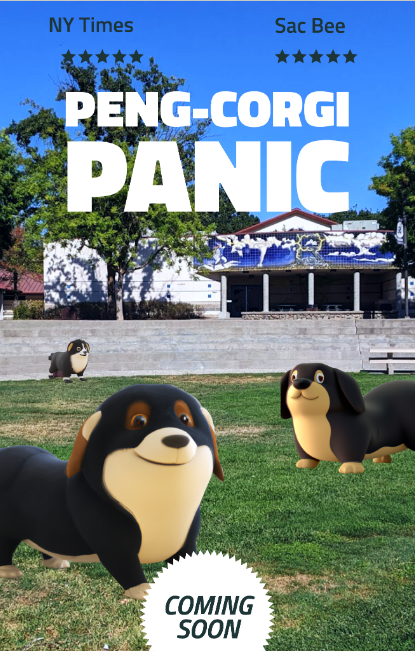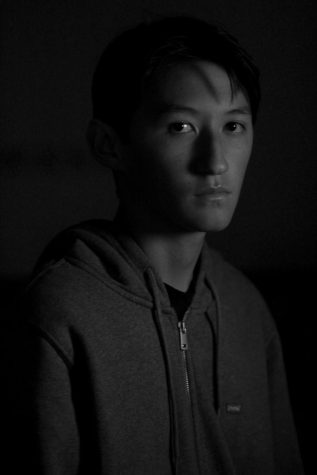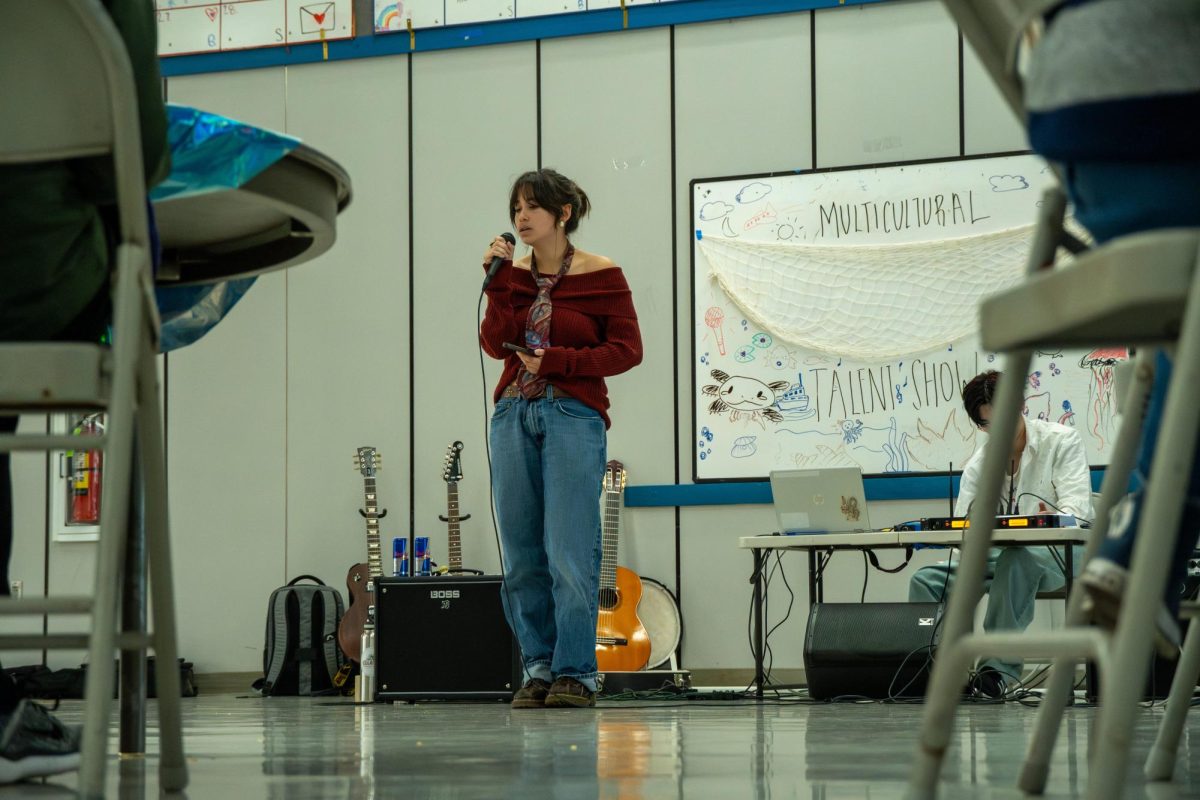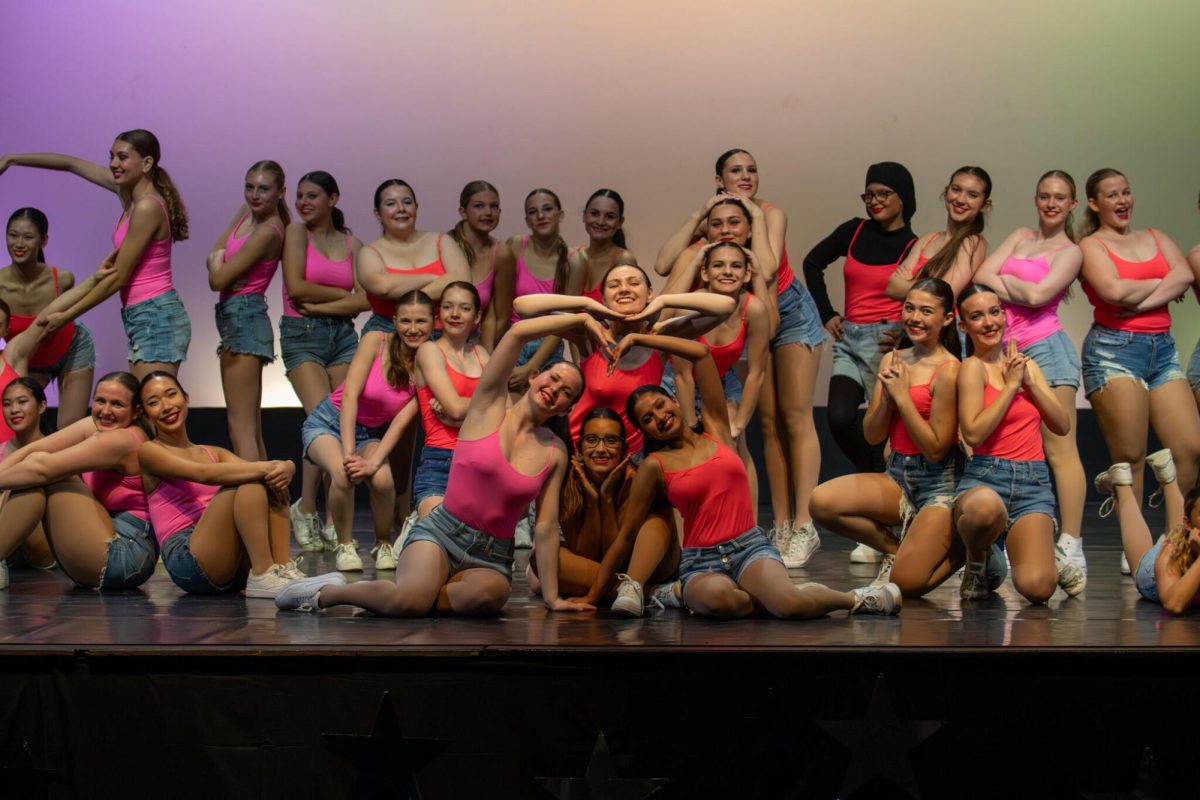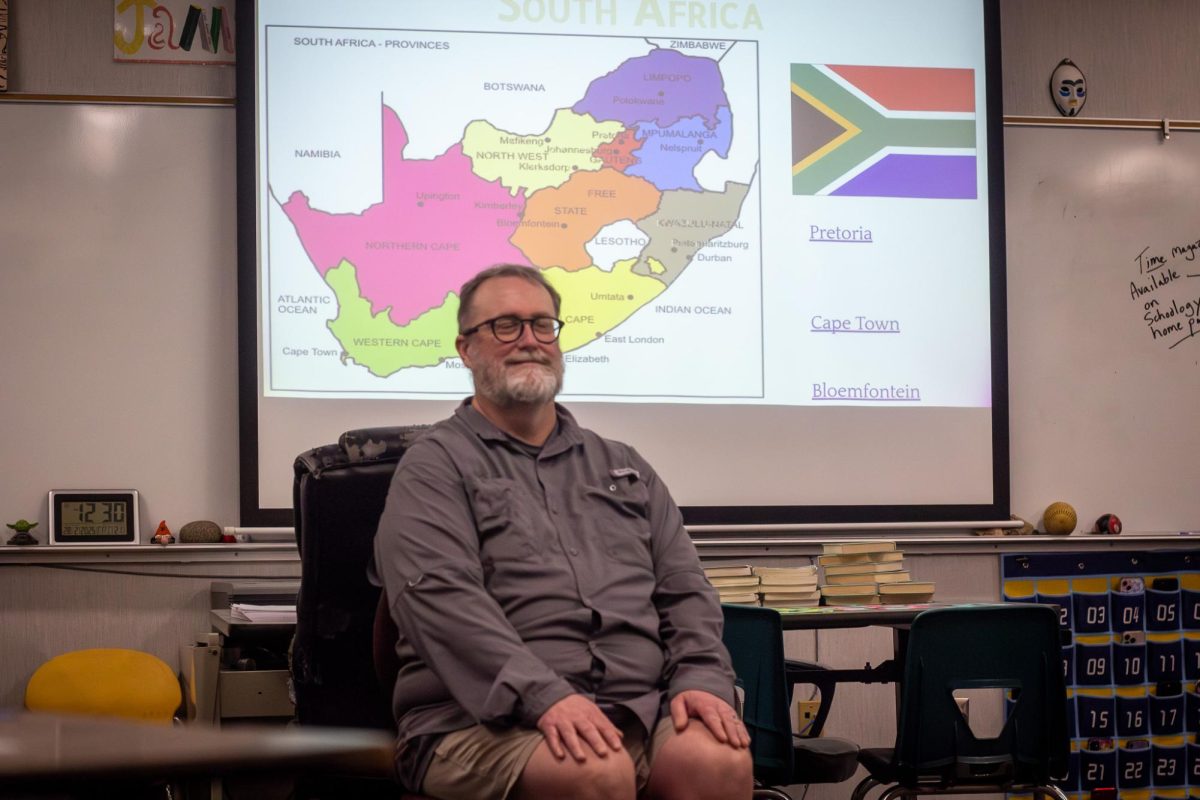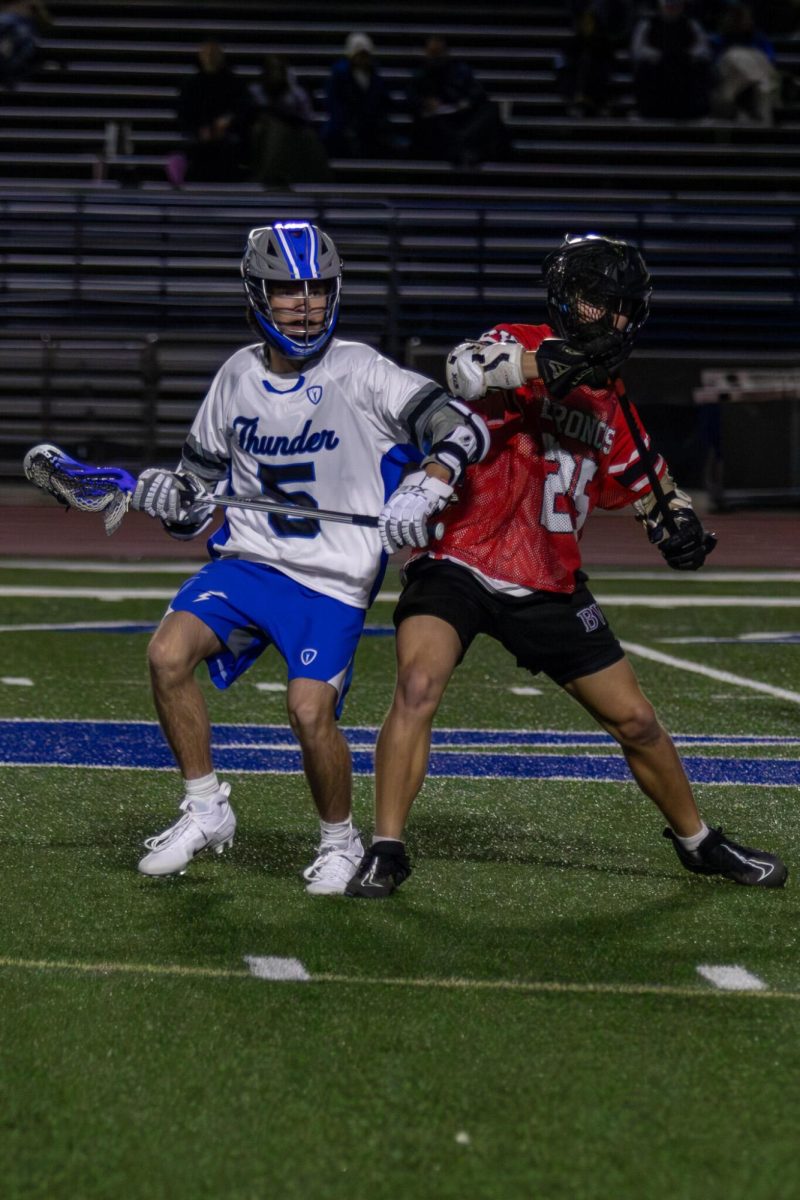Artificial A’s
AI is reshaping secondary education in more ways than one
May 1, 2023
“Mutant Welsh corgis crossbred with penguins have escaped the school. Only lovable teacher Mr. O’Donnell and his students can stop them from overrunning the world.”
This wacky premise for a screenplay couldn’t be anything but innocuous, or so it at first might seem. However, the script for “Peng-Corgi Panic” is entirely AI-generated. And the scary part: it actually makes sense.
What for now remains a fun experiment in RHS video productions teacher Ryan O’Donnell’s classroom may have serious implications not just for film making, but for all aspects of human society. One sector that is sure to feel the impact of AI early on is the world of secondary education. Recent developments in AI-assisted writing — specifically the explosion in popularity of OpenAI’s ChatGPT — have raised questions from whether the use of these tools for school assignments constitutes plagiarism, to why students come to school in the first place.
On March 14, OpenAI announced the release of GPT-4, vastly improving upon the already astonishing capabilities of ChatGPT. Earning fives on nine AP exams and scoring a 1410 on the SATs, GPT-4 will no doubt bring on an entirely new set of challenges for both students and educators alike. By far the most immediately concerning capability of these chatbots is their ability to generate strikingly human-sounding bodies of text from user prompts.
Concerns
Several obvious concerns present themselves, the first of which is cheating. Assistant Principal Michael Pappas equated the unauthorized use of ChatGPT for school assignments to plagiarism when it comes to the academic integrity policy, and the first reaction of many educators is to crack down on it in order to prevent dishonesty. Already, companies like turnitin.com have set out to develop tools to detect and flag AI-generated text with up to 97% accuracy. But with the release of GPT-4, and as these technologies continue to improve, it will no doubt grow harder and harder to distinguish between human and AI writing. In time, it may very well become impossible. Other ways of upholding academic integrity might include checking a student’s progress, either through document version history or with the help of third-party extensions, and implementing more timed writes. These methods are not perfect, given that a determined student could simply type the AI-generated text into an open Google document in a way that seems organic, and timed writes take up much more time in class than standard take-home papers.
Other problems are less immediate, but perhaps more important in the long run. “A lot of times technology has been prematurely embraced, without really thinking critically about what it is that the technology is doing, and whether or not that technology is getting in the way of our educational mission,” RHS English teacher James Grace told The Flash. He, like many other educators, believes that AI hinders learning by allowing a robot to think for students. “I’m here to teach students how to read or write, and communicate, and I’m using a tool that basically just makes that easier for the sake of making that easier,” he said.
Mr. Grace challenged students to rethink why they come to school each day: “If the reason they’re going to school is just to produce products, and those products do not reflect themselves, then I don’t see the point,” he said. AI chatbots enable students to earn a passing grade on an assignment without actually learning the skills being taught. In light of developments in AI, Mr. Grace prompts teachers too to reconsider “what [they] teach, and how [they] teach; and what [they] assess and how [they] assess.” He believes that the basic skills of reading and writing and the ability to think critically will help to prepare students for whatever the future might hold.
“Any writing assignment is really just trying to get the student to take a moment and form their own thoughts and opinions about a text that they’re studying,” Mr. Grace said. ChatGPT is a bot created and trained by humans, and thus reflects the biases of our current society. By doing their thinking for them, ChatGPT and other chatbots are “robbing the student of their voice.”
Obviously, Mr. Grace already has the skills that he teaches, and he acknowledges the potential of AI as a tool outside the classroom even while cautioning against its use inside the classroom. “For me, I’m not too concerned with it,” he said. “For my kids and my students, I am concerned with it. Because it’s really something that can rob you of what we’re here for, which is learning.”
As a teacher of an elective class in which students are encouraged to be creative, Mr. O’Donnell contributes a different perspective on the dangers of delegating one’s thinking work to robots. “Many people aren’t thinking about how dangerous that is for us to give up our humanity of what it is to be creators — to go through the creative struggle to come up with an idea, to come up with your own something that’s going to be your artistic expression, and say, I’ll have someone else do it for me,” he said. Nevertheless, Mr. O’Donnell also sees value in bringing AI into the classroom.
Potential
As an end-of-year project, Mr. O’Donnell’s students have to produce their own short film — this year, he opened up the option to students of using AI to write the script. “I don’t know if this is something I’m always going to do, but we’re trying to embrace it a little bit right now and see what that’s gonna be like,” he said. His students immediately took interest and began “throwing in some crazy bonkers ideas throwing, you know, silly characters and whatever and say write a screenplay for me, and it does that.” His only caveat is that students must include ChatGPT in their credits.
As part of his unit on “B movies” — which are “campy and trashy and fun” movies written and produced on a budget — Mr. O’Donnell and his students used ChatGPT to write the synopsis for “Peng-Corgi Panic.” In one of his classes, he took it a step further, having the AI create characters and write dialogue. He used DALL-E — an AI image generator also created by OpenAI — to create 3D renders of what a Penguin-Corgi crossbreed might look like and used Canva — which has also started to incorporate AI into its interface — to construct a movie poster from those images. While the result was certainly amusing, Mr. O’Donnell said, “We’re handing off that spark of what makes us, us to say — yay, you do it computer, it’s fun!”
Whether teachers allow it or not, some students are already using AI to help them to complete their assignments. A student who chose to remain anonymous admitted to using ChatGPT for writing assignments in various classes. “It’s more like a calculator than like cheating in my opinion,” he said, noting that the quality of the AI responses depends on the quality of the questions asked.
The student said that he does not feel his learning has been negatively affected by his use of ChatGPT, rather, he feels that knowing how to ask the right questions is a valuable skill in and of itself. He uses the AI generated text mainly as a first draft. “When I’m sitting there staring at a blank Google doc with nothing on it, it’s hard to get started sometimes so having something to start with helps,” he said. When using ChatGPT, he has found himself getting started with his work sooner and procrastinating less.
Using ChatGPT, the student has earned several perfect scores and even extra credit. He described its performance as “flawless” with regards to his grades. Even so, ChatGPT is not without limitations. “It can’t answer a lot of specific questions because it tries to keep things unbiased,” he said. “So if you’re writing a paper, say, on a debate, or you’re trying to write an opinion on a debate it’s not super good.” Furthermore, ChatGPT has little to no knowledge of events after the year 2021, and so it isn’t much help when writing about current events.
Reality
Though they disagree on whether or not using ChatGPT constitutes plagiarism, both the anonymous student and Mr. Pappas used the analogy of a calculator to highlight the potential for ChatGPT as a tool in the classroom. However, Mr. Pappas noted that even with calculators, which have been largely embraced in secondary education, students are still taught arithmetic in primary school in order to fully understand the steps behind calculation. “Maybe there is a point down the line where it is a tool to complete an assignment,” said Mr. Pappas. He compared the use of ChatGPT in the classroom to the calculator and non-calculator section of a math test — depending on context, a calculator use could be an essential part of the assessment, or it could be cheating. “We’re looking at different skill sets on here that in which, hey, that’s okay to use a calculator if it means that you’re understanding the concept and getting to the result,” he said.
Whether a tool or a trick, AI will only get more robust in the foreseeable future. Mr. O’Donnell called AI the “largest disrupter” to education he has seen in his lifetime. “Public education is monumental, like a Titanic, it’s very difficult changing direction. And here we have a massive iceberg that is right in front of us, and we are unable to move quickly,” he said. “I think that we are completely in the Wild West, new territory and new layers.”
Mr. Pappas said, “If you think about some of the things that we have out there that are available for people to use right now, you wouldn’t usually see schools at the forefront of using all that technology.” He explained that schools must take the time to “vet” technology before they bring it into the classroom. “Our goal is to know, hey, are our students demonstrating learning? Right? And so that’s something we’re gonna have to work through.”
Maybe Mr. O’Donnell’s next AI-generated script should be titled “AI Panic,” a story about how lovable teacher Mr. O’Donnell and his students tackle the artificial intelligence threat to his classroom and the world.
